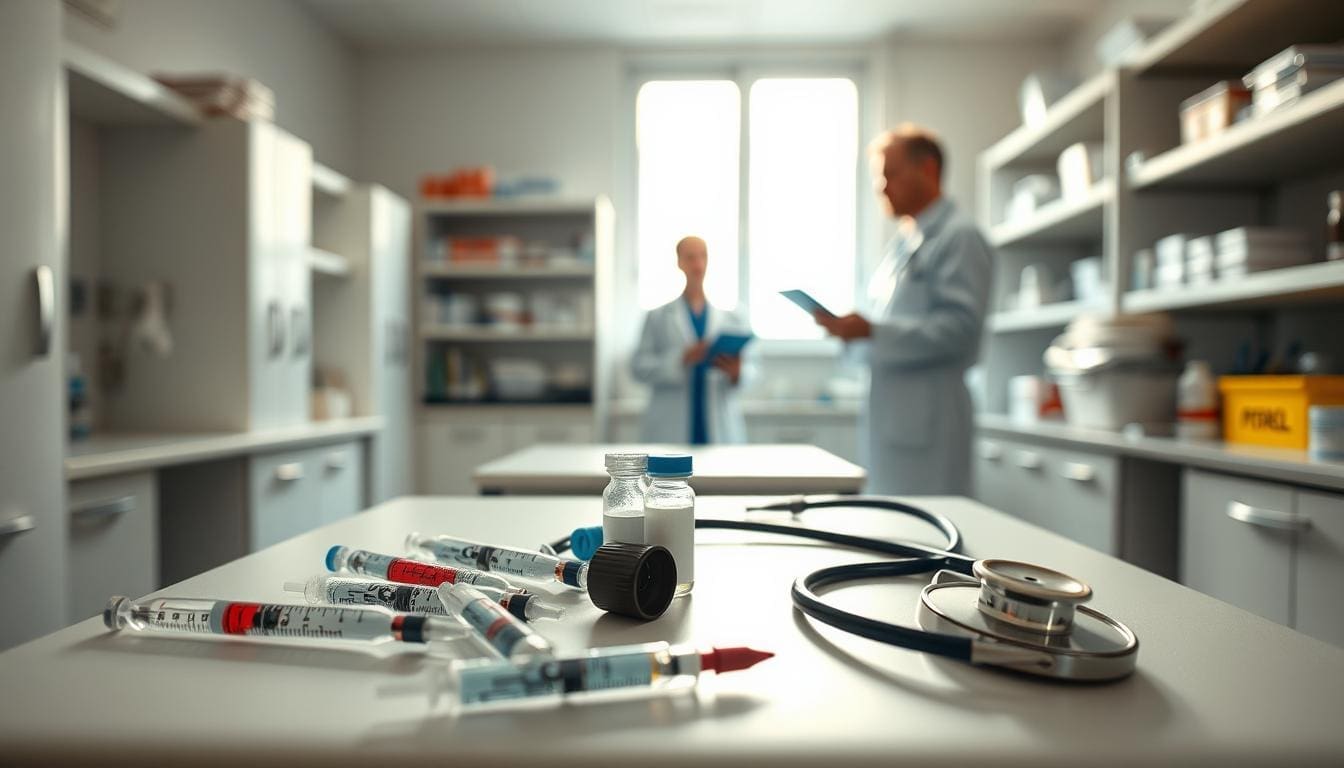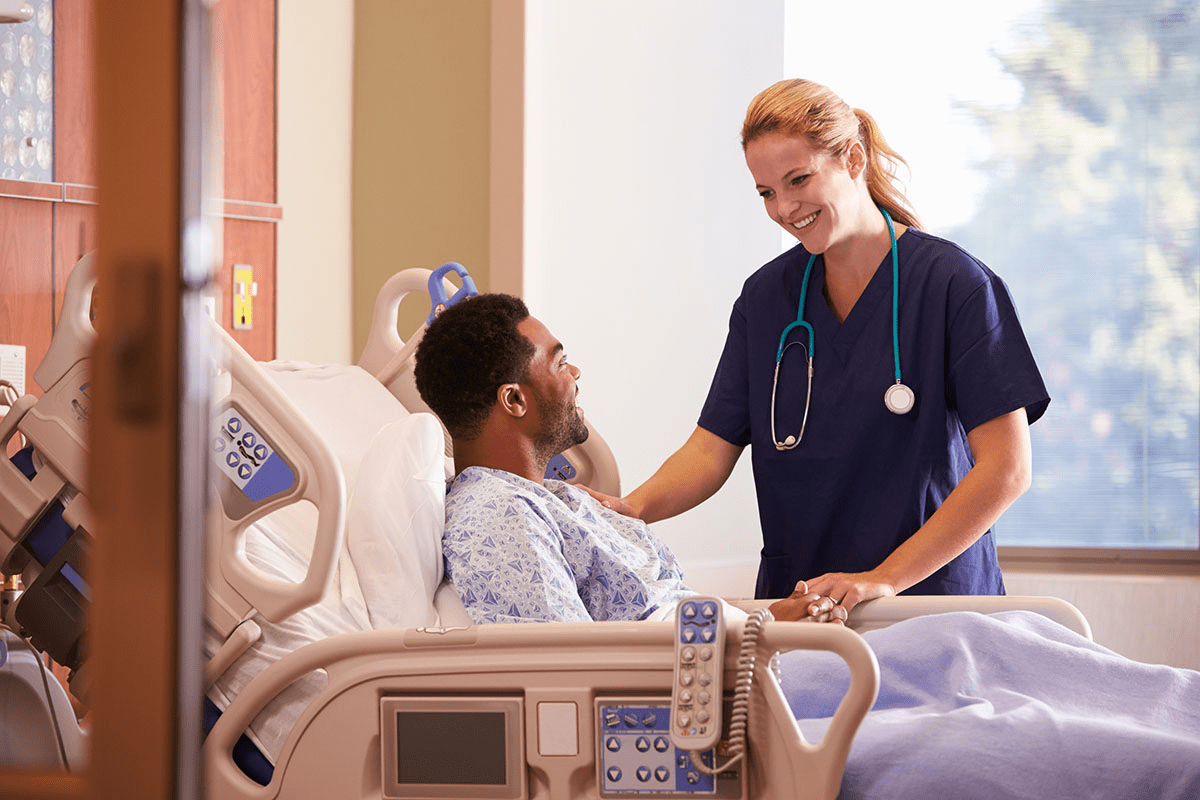Last Updated on November 26, 2025 by Bilal Hasdemir

Getting a cancer diagnosis can feel overwhelming. Finding the right treatment can be tough. At Liv Hospital, we aim to give our patients the best care possible.
Additional therapy after primary treatment is key in cancer care. We focus on creating advanced, ethical, and personalized plans. Adjuvant therapy is used after the main treatment, like surgery, to get rid of any leftover cancer cells and stop it from coming back.
Knowing about the adjuvant setting definition helps patients make better choices. Our team is here to offer top-notch healthcare and support for patients from around the world.
Key Takeaways
- Cancer treatment is a complete process, including main and extra therapies.
- Adjuvant therapy aims to remove any cancer cells left and stop it from coming back.
- Understanding adjuvant setting is key for making informed decisions.
- Liv Hospital provides advanced, ethical, and personalized cancer care.
- Our team is committed to delivering world-class healthcare with complete support.
The Adjuvant Setting Definition and Its Importance in Cancer Care
The adjuvant setting is key in cancer treatment. It gets rid of any cancer cells left after the first treatment. Cancer treatment doesn’t stop after the first surgery or treatment. More therapies are needed to kill off any cancer cells left behind.
Core Concept: Treatment After Primary Intervention
The adjuvant setting means treatments after the first step, like surgery. Adjuvant cancer therapy includes things like chemotherapy, hormone therapy, and radiation. These are chosen based on the cancer type and the patient’s health.
Studies show that adjuvant therapies can greatly improve survival rates. For example, adjuvant chemotherapy targets tiny cancer cells left after surgery. This helps prevent cancer from coming back.
Historical Evolution of Adjuvant Approaches
Adjuvant therapy has changed a lot over time. Our understanding and use of these treatments have grown. Now, treatments are more tailored to the patient and the cancer’s genetics.
The history of adjuvant therapy shows how far we’ve come. As research keeps going, we’ll see even better treatments. This will lead to better results for patients.
The Purpose and Goals of Adjuvant Cancer Therapy
Adjuvant cancer therapy aims to get rid of tiny cancer cells left behind. This helps improve patient outcomes. It’s key in lowering the chance of cancer coming back and boosting survival rates.
Going through cancer treatment is tough, but adjuvant therapy gives patients a better shot at long-term remission. It’s essential in modern cancer treatment by getting rid of any leftover cancer cells.
Eliminating Microscopic Disease
The main goal of adjuvant therapy is to find and kill tiny cancer cells left after the main treatment. It uses adjuvant radiation therapy and adjuvant medicine to do this.
Research shows adjuvant therapies can cut down cancer coming back by killing tiny cancer cells. For example, adjuvant radiation therapy treats the area where the tumor was, making local recurrence less likely.
Preventing Cancer Recurrence and Improving Survival Rates
Another big goal of adjuvant therapy is to stop cancer from coming back and improve survival chances. It tackles the spread of cancer, leading to better patient results.
Studies and trials have proven adjuvant therapies work well in many cancers. The table below shows some key findings on adjuvant therapy’s benefits in different cancers.
| Cancer Type | Adjuvant Therapy | Benefit |
|---|---|---|
| Breast Cancer | Adjuvant Chemotherapy | Improved survival rates |
| Colorectal Cancer | Adjuvant Chemotherapy | Reduced recurrence risk |
| Lung Cancer | Adjuvant Radiation Therapy | Enhanced local control |
The table shows adjuvant therapy helps improve outcomes for many cancer types. Knowing its purpose and goals helps patients and doctors make better treatment choices.
Types of Adjuvant Therapies in Modern Oncology
Cancer treatment has changed a lot with new adjuvant therapies. These treatments are given after the first treatments to lower cancer coming back. We’ll look at the different types of adjuvant therapies that are key in cancer care today.
Chemotherapy as an Adjuvant Treatment
Adjuvant chemotherapy uses drugs to kill cancer cells left after the first treatment. It’s very effective for cancers that often come back.
- Chemotherapy can be taken by mouth or through an IV, based on the cancer and drugs.
- The right chemotherapy plan is made for each patient and their cancer type.
- New adjuvant chemotherapy is more targeted and effective.
Adjuvant Radiation Therapy Techniques
Adjuvant radiation therapy kills cancer cells left in the tumor area or nearby tissues. It’s often used with surgery to lower the chance of cancer coming back.
New radiation therapy methods are very precise. They target cancer cells better while protecting healthy tissues. Some advanced methods include:
- Intensity-Modulated Radiation Therapy (IMRT)
- Image-Guided Radiation Therapy (IGRT)
- Stereotactic Body Radiation Therapy (SBRT)
Hormone Therapy in the Adjuvant Setting
Adjuvant hormone therapy treats hormone-positive cancers like some breast and prostate cancers. It blocks or lowers hormones that help cancer grow.
The right hormone therapy depends on the cancer, the patient’s menopausal status, and other factors. Common therapies include:
- Tamoxifen for breast cancer
- Aromatase inhibitors for postmenopausal women with breast cancer
- Androgen deprivation therapy for prostate cancer
Immunotherapy and Targeted Treatments
Adjuvant immunotherapy and targeted treatments are new and promising in cancer care. They boost the immune system or target cancer growth drivers.
Examples include:
- Checkpoint inhibitors
- Monoclonal antibodies
- Tyrosine kinase inhibitors
Adjuvant therapies are evolving fast, thanks to research and trials. As we go on, using these therapies in cancer care will be key to better patient results and lower cancer risk.
Distinguishing Between Adjuvant and Neoadjuvant Treatment Approaches
It’s important to know the difference between adjuvant and neoadjuvant therapies for cancer treatment. These two methods are key in fighting cancer but work in different ways and at different times.
Timing Differences in the Treatment Sequence
The main difference is when these treatments are used. Neoadjuvant therapy comes first, before the main treatment like surgery. It aims to make tumors smaller and easier to remove.
Adjuvant therapy is used after surgery. Its goal is to kill any cancer cells left behind, lowering the chance of cancer coming back.
Clinical Decision-Making Between Pre and Post-Surgical Therapies
Choosing between adjuvant or neoadjuvant therapy depends on many things. These include the cancer type and stage, the patient’s health, and what the treatment aims to achieve. Research shows that when and how treatments are given can greatly affect results.
Let’s look at how adjuvant and neoadjuvant therapies differ and when they’re used:
| Treatment Approach | Timing | Primary Goals |
|---|---|---|
| Neoadjuvant Therapy | Before primary treatment (surgery) | Shrink tumors, address microscopic disease |
| Adjuvant Therapy | After primary treatment (surgery) | Eliminate remaining cancer cells, reduce recurrence risk |
Knowing the differences between adjuvant and neoadjuvant treatments helps both patients and doctors make better choices. This leads to better care and outcomes for cancer patients.
Common Cancer Types Treated in the Adjuvant Setting
We use adjuvant treatments to fight cancer cells left after the first treatment. This helps lower the chance of cancer coming back in many types. Adjuvant therapies are key in managing cancer, helping patients live better lives.
Breast Cancer Adjuvant Protocols
For breast cancer, treatments are chosen based on the cancer’s stage and other details. Adjuvant chemotherapy is used for high-risk cases. Hormone therapy is best for hormone receptor-positive tumors. Studies show adjuvant drugs can greatly increase survival chances for breast cancer patients.
Colorectal Cancer Adjuvant Approaches
In colorectal cancer, adjuvant chemotherapy helps get rid of any leftover cancer cells after surgery. The treatment plan depends on the cancer’s stage and other factors. For stage III colon cancer, FOLFOX is often the chosen adjuvant chemotherapy.
Lung Cancer Adjuvant Strategies
For non-small cell lung cancer (NSCLC), adjuvant chemotherapy is advised for stage II or III patients after surgery. Adjuvant targeted therapy is also being looked into for those with certain genetic changes, like EGFR mutations.
Other Cancers Benefiting from Adjuvant Treatment
Adjuvant therapies are also used for other cancers, like melanoma, gastric cancer, and some sarcomas. The treatment plan varies based on the cancer type, stage, and the patient’s situation.
Determining Candidates for Adjuvant Treatment
Finding the right candidates for adjuvant therapy is key in cancer treatment. It involves looking at many factors to decide the best treatment for each patient.
Risk Assessment and Prognostic Factors
To see if adjuvant therapy is right, we first look at the patient’s risk. We check prognostic factors to guess the chance of cancer coming back. Important factors include:
- Tumor size and stage
- Histological grade
- Lymph node involvement
- Biomarker status (e.g., HER2, ER/PR)
- Genetic mutations (e.g., BRCA1/2)
By looking at these, we can guess the risk of cancer coming back. This helps us decide if adjuvant therapy is needed.
Personalized Medicine in Adjuvant Decision-Making
The rise of personalized medicine has changed how we think about adjuvant therapy. It lets us tailor treatment to fit each patient better. This way, we can get better results and reduce side effects.
Key parts of personalized medicine in adjuvant therapy are:
- Genomic testing to find specific mutations or profiles
- Using predictive biomarkers to choose treatments
- Considering patient-specific factors, like age and health issues
By adding these, we can make a more detailed and effective treatment plan. It meets the unique needs of each patient.
Benefits and Risks of Adjuvant Cancer Therapy
It’s important for patients and doctors to understand the good and bad of adjuvant cancer therapy. This treatment is given after the main treatment to help fight cancer. We’ll look at the ups and downs of this approach and how it affects patients.
Survival Advantages and Quality of Life Improvements
Adjuvant therapy can greatly improve survival and quality of life for many. It helps get rid of tiny cancer cells left after main treatments. This can lower the chance of cancer coming back.
For example, in breast cancer, adjuvant chemotherapy can cut the risk of coming back by up to 30%. Adjuvant radiation therapy also lowers the risk of coming back in cancers like breast, lung, and rectal.
Potential Side Effects and Complications
Adjuvant therapy has big benefits but also risks. Side effects and complications can vary a lot. Common ones include tiredness, nausea, hair loss, and a higher chance of getting infections.
For instance, chemotherapy can cause side effects from mild to severe. Some long-term effects are neuropathy or heart problems. Radiation therapy can cause skin reactions and tiredness.
| Therapy Type | Common Side Effects | Potential Long-term Complications |
|---|---|---|
| Adjuvant Chemotherapy | Fatigue, nausea, hair loss | Neuropathy, cardiac toxicity |
| Adjuvant Radiation Therapy | Skin reactions, fatigue | Fibrosis, secondary malignancies |
| Adjuvant Hormone Therapy | Hot flashes, mood changes | Osteoporosis, cardiovascular risks |
Risk-Benefit Analysis in Treatment Planning
Doing a risk-benefit analysis is key in deciding if adjuvant therapy is right for a patient. We look at the good it can do and the bad it might cause. We consider the patient’s health, cancer stage, and tumor details.
We use tools and factors to help make these decisions. By carefully looking at risks and benefits, we create treatment plans that work best for each patient.
Emerging Trends and Future Directions in Adjuvant Medicine
The field of adjuvant medicine is changing fast. This is thanks to new discoveries in cancer research and technology. These changes are key to better care and quality of life for patients.
Novel Adjuvant Drugs and Approaches
New drugs and treatments are making a big difference in adjuvant medicine. Targeted therapies and immunotherapies are leading this change. They offer more precise and effective treatments for patients.
- Immunotherapies that help the body fight cancer
- Targeted therapies that focus on cancer cell traits
- Combination therapies that mix different treatments for better results
These new methods are being tested in cancers like breast, lung, and colorectal. They could help improve survival rates and lower the chance of cancer coming back.
Genomic Testing to Guide Adjuvant Care
Genomic testing is a big help in choosing adjuvant care. It looks at tumor genetics to find mutations and biomarkers. This lets us tailor treatments to each patient’s needs.
Genomic testing in adjuvant care has many benefits:
- It helps find the right treatments for patients
- It avoids treatments that might not work
- It picks therapies that target specific tumor traits
Ongoing Clinical Trials and Research
Clinical trials and research are key to moving adjuvant medicine forward. They explore new treatments, combinations, and ways to care for patients.
Some areas being looked into in trials include:
- Using liquid biopsies to check treatment success and find cancer cells left behind
- Applying artificial intelligence in planning treatments
- Creating new adjuvant therapies like cancer vaccines and T-cell therapies
As trials show promising results, we can look forward to more progress in adjuvant medicine. This will lead to better care for cancer patients all over the world.
Conclusion: The Evolving Landscape of Adjuvant Cancer Treatment
It’s important to understand what the adjuvant setting is in cancer treatment. This area is always changing, thanks to new research and better adjuvant therapies. These changes help improve how well patients do after treatment.
Adjuvant therapy is key in fighting cancer. It helps get rid of any cancer cells left behind and stops new ones from growing. This makes sure patients have the best chance of beating cancer.
New drugs and ways to treat cancer are being discovered all the time. We’re also using genetic tests to help decide the best treatment for each patient. And, there are always new clinical trials happening.
These advances are making cancer treatment better and more tailored to each person. By keeping up with these changes, we can make patients’ lives better and help them fight cancer more effectively.
FAQ
What is the adjuvant setting in cancer treatment?
The adjuvant setting is when extra treatments are used after the main treatment. This is often after surgery. It aims to get rid of any cancer cells left behind and lower the chance of cancer coming back.
What is the purpose of adjuvant cancer therapy?
Adjuvant cancer therapy’s main goal is to get rid of tiny cancer cells. It also aims to stop cancer from coming back and improve survival chances.
What types of adjuvant therapies are available?
Today, we have many adjuvant therapies. These include chemotherapy, radiation, hormone therapy, and immunotherapy. Each has its own benefits and uses.
How does adjuvant therapy differ from neoadjuvant therapy?
Adjuvant therapy is given after the main treatment, like surgery. Neoadjuvant therapy is given before to shrink the tumor and make it easier to remove.
What cancer types are commonly treated in the adjuvant setting?
Many cancer types are treated with adjuvant therapy. These include breast, colorectal, and lung cancer, among others.
How are candidates for adjuvant treatment determined?
To decide who needs adjuvant treatment, doctors look at several factors. They consider risk factors and use personalized medicine approaches.
What are the benefits of adjuvant cancer therapy?
Adjuvant therapy can improve survival rates and quality of life. But, it also has risks and side effects.
What are the possible risks and side effects of adjuvant therapy?
Adjuvant therapy can cause side effects like fatigue, nausea, and hair loss. It’s important to weigh the benefits against the risks when planning treatment.
What emerging trends are shaping the field of adjuvant medicine?
Adjuvant medicine is always changing. New trends include new drugs and approaches, genomic testing, and ongoing clinical trials.
How does genomic testing guide adjuvant care?
Genomic testing helps find genetic mutations. This information helps doctors decide on the best adjuvant treatment and can improve outcomes.
What is the role of personalized medicine in adjuvant decision-making?
Personalized medicine is key in adjuvant decision-making. It tailors treatments to each patient’s unique characteristics and tumor biology.
References
Wikipedia: Adjuvant therapy
PubMed Central (NCBI): Principles of Adjuvant Therapy in Cancer






